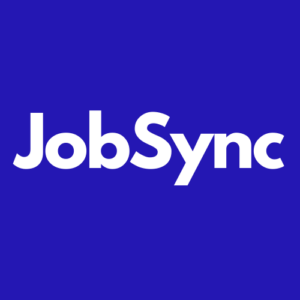
With a spot on the Forbes list of the World’s Best Employers and multiple gongs for the Best Global Culture, Best Company for Diversity, and Best Company Happiness, Ford’s talent and people teams have a reason to be proud of what they do.
So says Melissa Thompson, Global Head of Talent Acquisition at Ford Motor Company. Thompson recently chatted with JobSync about how Ford’s culture of Kaizen—the Japanese philosophy of making small, incremental changes for continuous improvement—is driving big changes in the company’s talent acquisition processes.
Ford has a long history of innovation, from the invention of the assembly line to the development of electric vehicles. Its name is synonymous with Kaizen, and the ethos is carried over into the company’s recruiting practices.
Inside Ford’s Kaizen Recruiting Philosophy
While Kaizen is prevalent in manufacturing and production, it has yet to get a foothold in most corporate recruiting departments. Introducing Kaizen came with a steep learning curve for Thompson and her team. While Ford was shifting back to lean principles, and the idea of Kaizen was bubbling up in the business, the talent team wasn’t initially aware of how it could apply to their area.
“With as much change as we need to do in the recruiting space, we saw Kaizen as an opportunity to, first, lead the way in HR around using this tool and figuring out how it could add value. Second, stakeholders should be pulled in to understand the pain points. And then third, develop a plan for incrementally improving recruiting in the end,” Thompson says.
These are noble goals, but the first challenge was more mundane—figuring out what problems needed to be solved. “Our Aged Recs were really high, so that was the metric that I was leaning in on,” Thompson says. “But when I presented it to the CHRO, she said, “Is time the most important thing for the business?” And, actually, the business doesn’t care about time. Yes, they want it to be fast, but they want you to find the right quality candidate.”
Making Small Changes for Big Results
Root cause analysis is one of the foundational principles of Kaizen. Practitioners use various approaches to figure out what is causing the problem they’re trying to solve—what Thompson calls “peeling the onion.” Her preferred approach is Kaizen Events or “blitzes.” Kaizen Events involve pulling key stakeholders into a room over a one- to three-day period to really understand the problem before solutions and developing the next steps.
When attempting to solve the Aged Rec issue, Thompson mapped the entire recruiting process and then held a three-day Kaizen Event. “We got in a room and said, ‘This is the first day. Let’s focus on what the current state is. Let’s really understand where we are. The second day is to think about the key things we can improve. What are our gaps, and how can we address them?’ Then, the third day was all about action plans. What are the things that we can do to address those gaps? What’s realistic? We ended up with a super-long list of 120 things. Then we split it into what we can do in the next 60 days, in the next six months, and longer-term.”
The Kaizen Event produced some significant changes; enough to convince the team that this was a tool worth using. But it was the process itself that was most beneficial. Whenever you bring leaders of any stripe together to solve a problem, there’s a tendency to jump straight to solutions. Thompson says that, with a Kaizen Event, “All of the process is bite-sized. You really can’t go ahead and do the solutioning before you understand the problem parts of the process that you have in front of you right now.”
Bringing Data into the Conversation
One area where Kaizen has really made a difference is in the way that Ford approaches the college recruiting process. “One has to remember that Ford is a 120-year-old company. There are some things that we do because we’ve always done them that way. And college recruiting was one of those things,” Thompson says. “The business felt like they owned the process. How do you wrestle that away from the business without them feeling like you’re taking something away from them?”
The answer was to hold a Kaizen Event around university recruiting. The objective? To determine what best practices were outside of Ford’s four walls and what metrics the team should be leaning on to better understand whether they were successful. “At the time, our offer-accept rate was less than 70 percent,” Thompson says. “And we didn’t know, is that bad?”
During the Kaizen, the team stripped back the college recruiting process to clarify what they were doing and whether those actions were delivering the results they were trying to achieve. “Were we looking at the right schools? Did we have clarity about how we were making offers? Who even owns the requisition?” Thompson says.
Bias was in there, too. People get attached to certain schools and have fixed ideas about which schools the company should be targeting. Data was key to challenging those assumptions. “We learned that only 4 percent of graduates from the University of Texas leave the state!” Thompson says. “Adjusting the target list to lean for schools in Michigan (where Ford’s head office is located) made a lot of difference.”
The college recruiting Kaizen was a blitz event compressed into one-and-a-half days. That’s a miniscule time investment when considering its impact on the company’s early-career strategy. “We said that if a school did not have more than five accepts, or they had an offer-acceptance rate of less than 50 percent, they’re on the bubble, and we have to discuss whether they’re going to stay on our target school list. Once you put it in that clear methodology, there’s much less argument around, ‘But that’s my favorite school!’ Between last year and this year, we have improved the offer acceptance rate more than 10-fold.”
Measuring the Value of Kaizen
At its core, Kaizen is about breaking down processes and understanding where waste exists in the system. It’s not just about speeding things up for speed’s sake or changing things for change’s sake—you’re looking at removing steps that don’t add value and making things more efficient. It’s a continuous process, which means the needle is constantly moving.
So, how do you measure the success of Kaizen efforts?
Thompson says there’s no one-size-fits-all answer, but “looking back to plan forward” is an excellent place to start. “We have bite-sized, quarterly objectives. That allows me to see, quarter over quarter, how we’re making movement. At the end of each quarter, we do a look-back and see what worked and what didn’t work. It may be three months before the impact trickles in.”
Thompson also recommends pausing Kaizen every so often. This serves two purposes: to let the changes you have made bed in and to make sure too many variables don’t muddle the data. “People get whiplash if you keep changing things. Intermissions allow you to settle the metrics and collect the data cleanly. It’s tough to understand what the data is trying to tell you when you’re constantly moving things around,” she says.
Kaizen may be about small changes, but it is ultimately a change management process. You need to take some big breaths between changes to avoid overwhelming the system and the people. The other thing you need to do to help people manage the change? Deliver on your promises. Thompson says that Kaizen only works when the whole team is on board, and that can only happen when they trust you to deliver the solutions they’ve asked for.
“The magic happens when I say we’re going to do something, and [the team] sees me do the thing that I said I was going to do. That’s another trust brick in the foundation of the wall. The more you build that trust, the more people will follow you, and the easier the change management is going to get. People need to believe that you’re actually going to drive the change,” she adds.
Watch the full roundtable with Melissa Thompson here.


